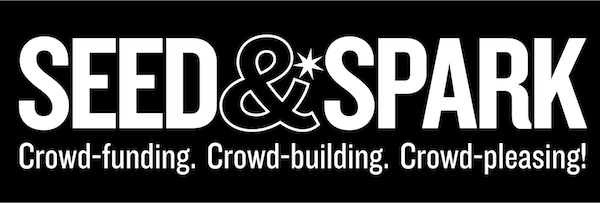Crowdfunding For Beginners: The CEO of Seed & Spark Shares Her Secrets

With the release of Zach Braff’s Kickstarter-funded sophomore feature Wish I Was Here and, of course, the successful fundraising of over $50,000 for what is evidently a much-needed bowl of potato salad, we’ve got crowdfunding on the brain this month.
Two weeks ago, Film Independent hosted an education event with Emily Best, the founder and CEO of crowdfunding platform Seed & Spark, during which she shared a step-by-step plan—sprinkled with insider tips and some funny anecdotes—to strategically launch a successful crowdfunding campaign.
The essence of crowdfunding is that it gives power and independence to the filmmakers themselves—and not to the same corporate suits who have made all the decisions in Hollywood for decades. Best emphasized that establishing a direct connection to your audience is what gives the filmmaker that independence. So the first step is figuring out: who exactly is your audience? (Hint: “males ages 18–34” is not good enough.)
The way to identify your audience is to talk to a few people who you know are a part of it—for some reason other than the fact that they’re your friend or your brother or your mom, and would see anything you made just because you made it—and ask questions: What blogs do they like? What music? Where do they hang out online, read news and watch movies? The answers to these questions will inform your approach every step of the way throughout your campaign, and getting anecdotal data from individual members of your audience will likely inspire new approaches.
Use this information to determine what your message is, and experiment with the tone. Best stressed the importance of authenticity. Crowdfunding is about building an engaged audience—they need to be engaging with you! She also noted that altruism is good—helping other people ultimately helps you—but pleading is not. Desperation is not a good look on a crowdfunding filmmaker (no matter how much you’re actually feeling it). When you’ve got your audience, your message and your tone figured out, hit social media hard. Social media outreach, Best explained, is about reaching out through social media to get one level closer to people: their inboxes. You need to track down email addresses like they’re Pokémon.
Next, arrive at a plan. Determine, honestly, how much you need (not just how much you want or think you can get), and be transparent about what you need it for. It’s also a good idea to crowdfund in stages—X amount for preproduction, X for production, X for post, etc. It keeps your contributors aware of the progress you’re making (and you should be keeping them up to date throughout the project on social media, too!), and it helps you stay organized and on budget. Sites like Seed & Spark are set up to facilitate that in a user-friendly way, all on the same campaign page.
Your pitch video is all about making a personal appeal. Never lose sight of the fact that you’re asking people to invest in you. Be authentic, true to your project and speak directly to your audience, now that you’ve figured out exactly who they are. When setting up incentives, think outside the box. They should be fun, visual and shareable (check out the link to Best’s presentation for some cool examples). Also, try to come up with things you won’t have to manufacture. That costs money that would be better spent on your film and, Best pointed out, a t-shirt or a mug doesn’t really have much of anything to do with your actual project.
Building momentum, Best explained, is about communicating “the inevitability of success.” Don’t say “if,” say “when.” If you don’t believe in your project, how will you convince anyone else to? Constantly update your audience via email and social media, and enlist the help of your friends and collaborators to spread the word. One cool tactic she suggested was coming up with a hashtag for your entire cast and crew to use during production—when everyone joins forces, you can make one hashtag explode on social media. “Friends don’t let friends crowdfund alone,” Best insisted.
Best also stressed: Crowdfunding begins before your campaign begins. Start with a small circle (that group of your friends, your brother, your mom, etc.), and reach out to them to enlist their help in reaching out to their friends. When you press the launch button, you need to already have a solid group of people who are ready and willing to contribute to your campaign. Because why would a complete stranger put their faith in you if they don’t see that someone who knows you already has? Likewise, continue to build your audience after the campaign ends. “Turn every viewer into another viewer,” Best said.
Regarding the potato salad, Best was not impressed: “My hope is that he does something cool with that money, and doesn’t keep it and make a mockery of all of the people who work really hard to raise money for things that actually matter,” she said. “I really hope it doesn’t overtake what’s actually happening in crowdfunding, which is that it’s the very first time independent creative people can bypass the third-party gatekeepers who have been keeping the lion’s share of our revenue for the past hundred-some-odd years, and we’re actually on our way to being able to make a real living as creatives.”
Mary Sollosi / Intern Blogger



